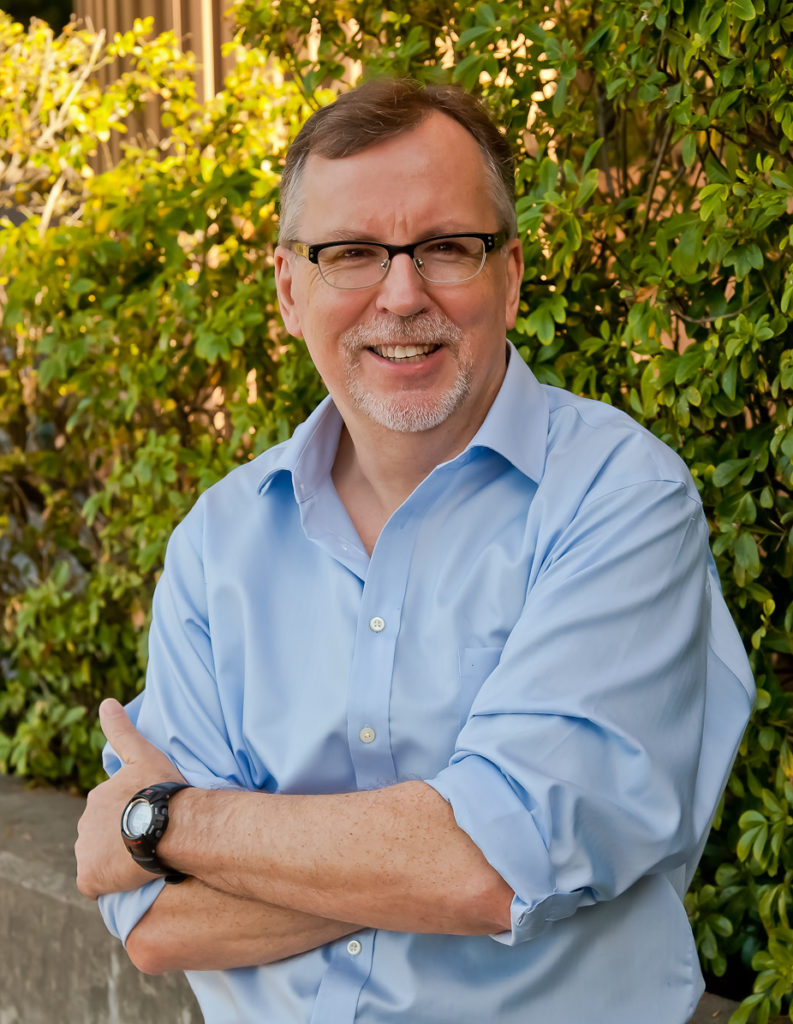 Howard Padmore became the Group Leader for Experimental Systems at the Advanced Light Source (ALS) in April 1993, six months before the ALS officially achieved “first light.” Although he became the division deputy in 2005 and has held other titles during his 28-year tenure at the Lab, he has consistently led the group that designs, builds, commissions, and supports beamlines at the ALS, taking the facility from day one through the approximately 40 beamlines that are online today. An internationally renowned scientist who specializes in solid state physics of photocathodes and plasmonic devices, diffractive X-ray imaging, and X-ray optics, Padmore has advanced X-ray science, invented instrumentation, and enabled the careers of many LBNL researchers.
Howard Padmore became the Group Leader for Experimental Systems at the Advanced Light Source (ALS) in April 1993, six months before the ALS officially achieved “first light.” Although he became the division deputy in 2005 and has held other titles during his 28-year tenure at the Lab, he has consistently led the group that designs, builds, commissions, and supports beamlines at the ALS, taking the facility from day one through the approximately 40 beamlines that are online today. An internationally renowned scientist who specializes in solid state physics of photocathodes and plasmonic devices, diffractive X-ray imaging, and X-ray optics, Padmore has advanced X-ray science, invented instrumentation, and enabled the careers of many LBNL researchers.
From the beginning, Padmore positioned the ALS at the critical intersection between cutting-edge science and state-of-the-art precision engineering, leading a talented team of scientists and engineers to develop the world-class suite of instruments enabling the innovative science that has become the hallmark of this national user facility. Padmore has made major contributions toward the development of almost every beamline and program, and has had much to do with the reason why the ALS is now a world-class facility. As his UC Santa Cruz colleague Quentin Williams put it, “He has been the pivotal person in the development and implementation of a broad suite of beamlines at the Advanced Light Source, and has played a primary role in ensuring that the ALS has developed, and continues to offer, absolutely premiere experimental capabilities.”
One area in which Padmore’s hand was especially evident was in the development of the hard X-ray program, partly in response to the 1997 “Birgeneau Report” that threatened the discontinuation of the ALS. DOE reviews commended his efforts which included the launch of protein crystallography capabilities (which paved the way for Nobel Prize–winning research in chemistry) and a series of other beamlines that greatly expanded the ALS user community by providing capabilities complementary to the soft X-ray beamlines.
Padmore was behind other signature technologies that have contributed to the ALS’s global reputation. In partnership with bioscientists at UC Berkeley and at the Lab, he developed structural biology capabilities at ALS. Biosciences ALD Paul Adams noted that “without [Padmore]’s deep understanding of synchrotrons and X-ray optics, we would not have the [current] vibrant biosciences program.” He also led the effort to develop capabilities for small-molecule scattering and imaging, which enabled work on important nanosystems such as metal–organic frameworks. With former ALS Director Roger Falcone, Padmore developed the femtosecond X-ray source, which helped lead to the field of ultrafast X-ray science that eventually motivated the Linac Coherent Light Source (LCLS), as well as international development of X-ray free electron lasers.
Padmore also contributed to major developments in the area of soft X-ray science and technology which have directly fed the science case for the ALS Upgrade Project (ALS-U). Knowing that soft X-ray imaging would have an enormous impact on science, Padmore and his group developed the photoemission electron microscopy beamline, a suite of scanning transmission X-ray microscopy beamlines, and more recently, the COSMIC beamline, to do coherent imaging at extremely high resolution using ptychography, which will be one of the flagship techniques at the upgraded ALS. He also oversaw the development of resonant soft X-ray scattering (launched by a 2012 article by Padmore and his colleagues), which has become one of the most productive beamlines and also lies at the heart of much of ALS-U science.
In addition to the work with his team, Padmore has pursued his own scientific program in X-ray optics which, unsurprisingly, has had important synergy with his role at the ALS. In particular, his leadership in designing advanced X-ray optical systems based on coherence-preserving optics and advanced gratings is laying crucial groundwork for the ALS-U project. He has also been involved in photocathode development, which is having impact across the light source world, including specific projects that have benefitted the LCLS.
As the current ALS Director Steve Kevan tells it, Padmore’s “most-cited publications started major programs at the ALS.” One example of this is his 2004 Science article on picosecond time-resolved measurements using photoemission electron microscopy. His 2014 Nature Photonics paper describes a diffraction imaging experiment resolving the chemical changes in nanoscale battery particles.
Falcone calls Padmore “an extraordinary scientist, technologist, manager, and mentor.” His many important contributions to synchrotron radiation science, beamlines, techniques, and facilities have established a prodigious legacy at the ALS and, with the ALS-U, a clear pathway to continued decades of scientific advancement in the future.
